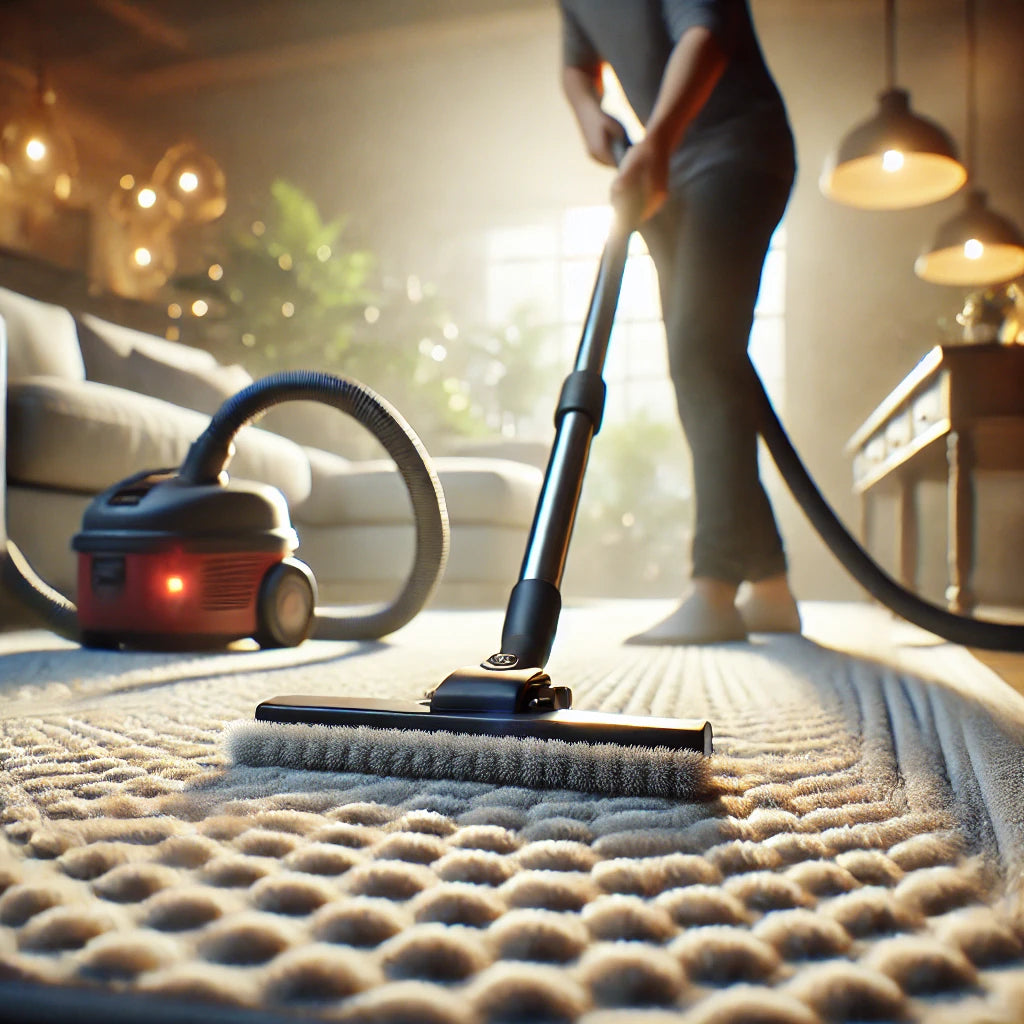Taking good care of your custom rug can make it last longer and stay looking new. This guide will give you simple tips for cleaning your rug daily and dealing with spills and stains. Follow these steps to keep your rug beautiful and useful for years.
Regular Rug Cleaning
Regular cleaning keeps your custom rug looking great and durable by preventing dirt buildup.
- Vacuuming: Vacuum your rug weekly. In high-traffic areas, vacuum more often. Use an adjustable-height vacuum to protect the fibers.
- Shaking: For smaller rugs, shake them outside weekly to remove dust and dirt.
- Beating: Use a rug beater to effectively remove dust, especially from thicker rugs.
Spot Cleaning Rugs
Accidents happen, and when they do, it's crucial to clean up spills and stains immediately to avoid permanent damage.
- Blotting: Blot up spills with a clean, dry cloth. Don't rub as this can spread the stain.
- Cleaning Solution: Use a mild detergent and water to clean stains. Test the solution on a small area first to make sure it doesn't change the color.
- Stain Removal: For tougher stains, such as wine or coffee, use a specialized rug cleaner. Follow the manufacturer's instructions carefully.
Deep Cleaning Rugs
In addition to regular vacuuming and spot cleaning, your rug will benefit from periodic deep cleaning. This helps to remove embedded dirt and refresh the rug fibers.
- Professional Cleaning: Consider professional cleaning once or twice a year to ensure deep cleaning without damage.
- DIY Deep Cleaning: If cleaning the rug yourself, use a steam cleaner or shampooer, follow instructions, and ensure it's fully dry before use.
Rotating Your Rug
Rotating your rug regularly helps to ensure even wear and prevents certain areas from becoming overly worn or faded.
- Frequency: Rotate your rug every three to six months. This is especially important for rugs in high-traffic areas.
- Benefits: Rotating the rug regularly helps it last longer and stay looking good.
Using Rug Pads
Rug pads provide a non-slip surface that keeps the rug in place, protects the floor underneath, and adds an extra layer of cushioning.
- Types of Rug Pads: Choose a rug pad that suits the type of flooring you have. For hardwood floors, opt for a felt and rubber combination pad. For carpeted floors, a thinner, non-slip pad works best.
- Installation: Cut the rug pad to fit inside the edges of your rug. This keeps the pad hidden and ensures a good grip.
By following these rug care tips, you can keep your custom rug looking its best and prolong its lifespan. Regular cleaning, immediate attention to spills and stains, periodic deep cleaning, and the use of rug pads are all essential steps in proper rug care. With a little effort, your rug can remain a stylish and functional part of your home for many years to come.


Share:
How to Choose the Perfect Rug for Your Interior